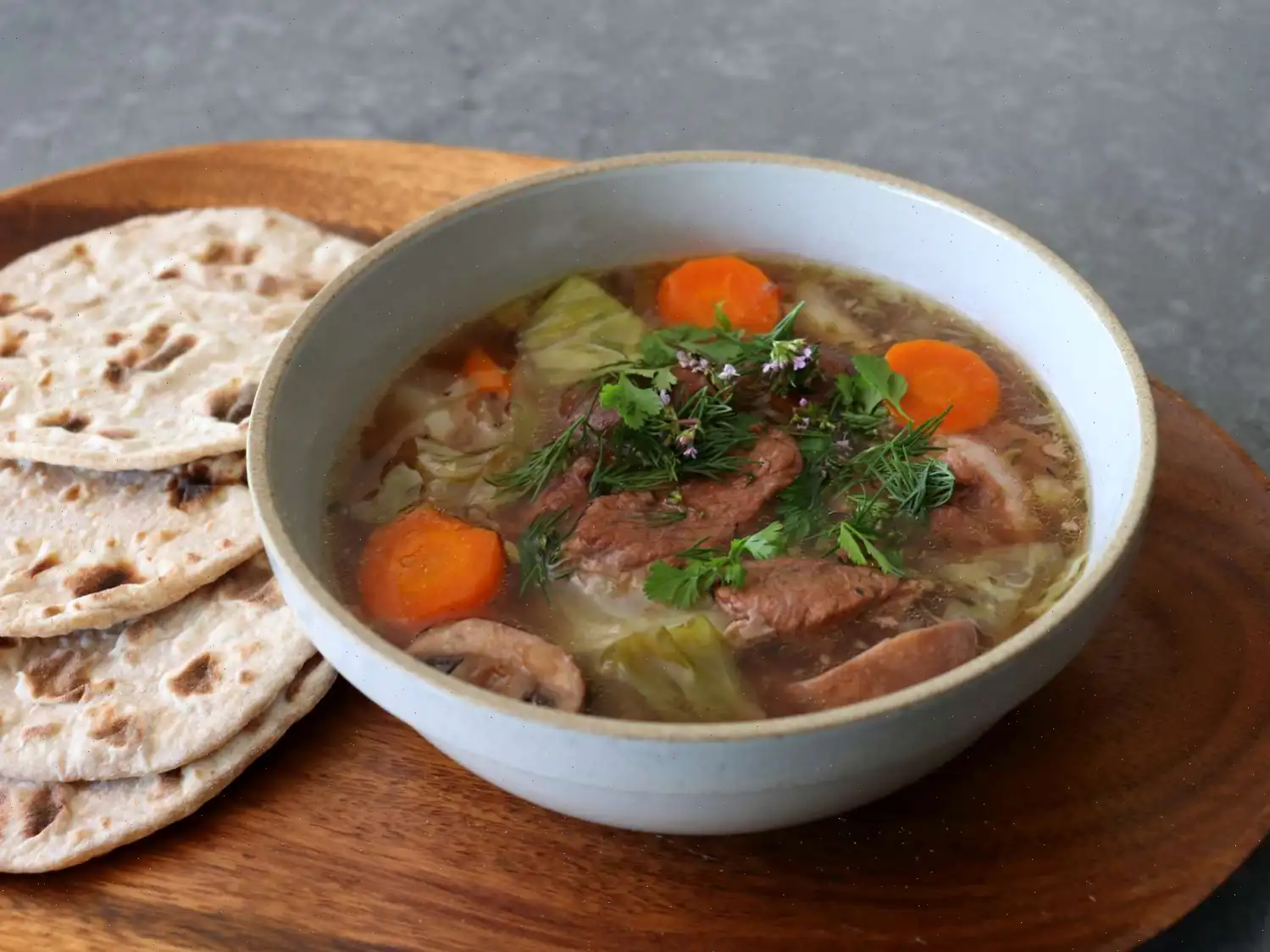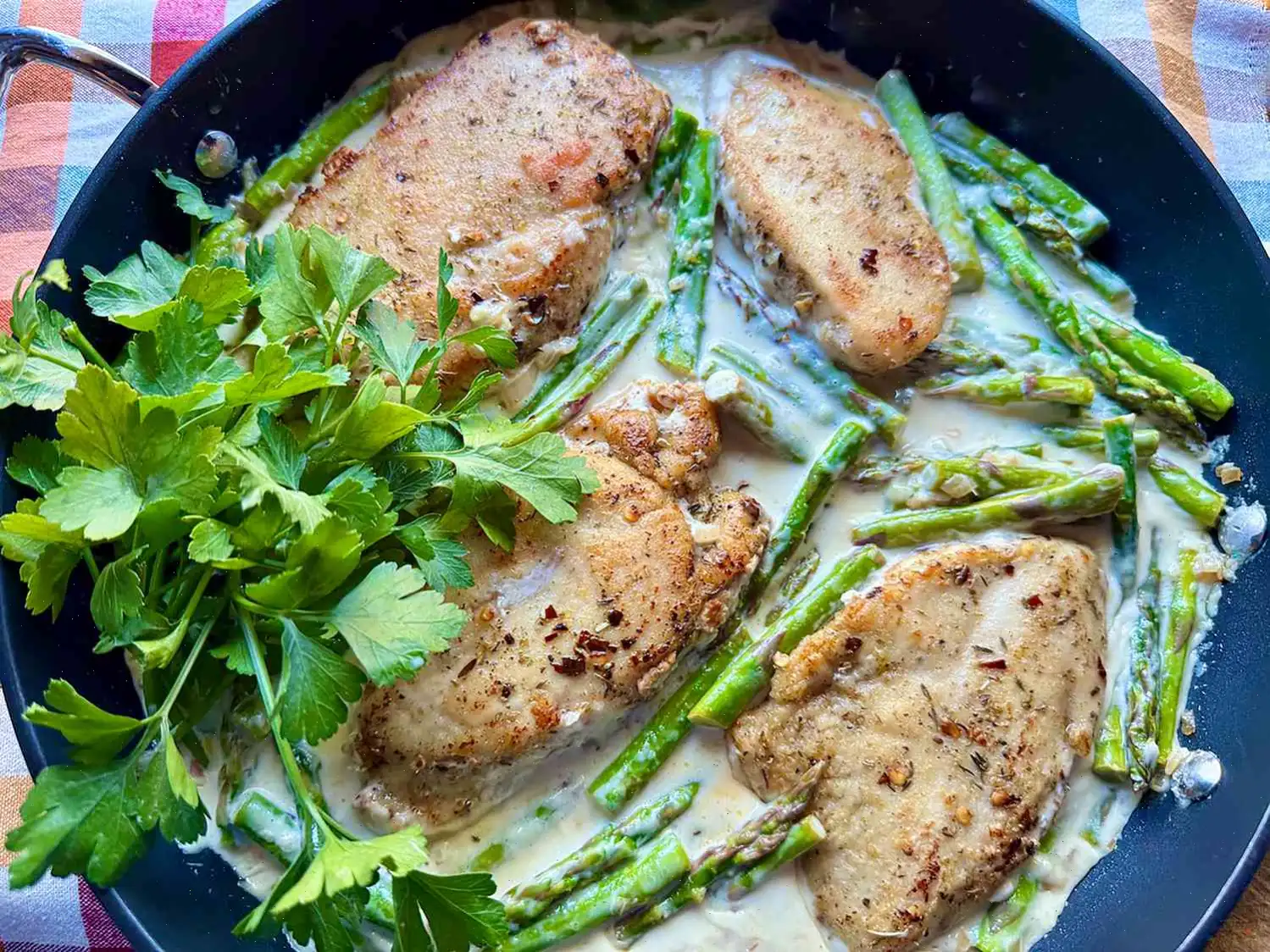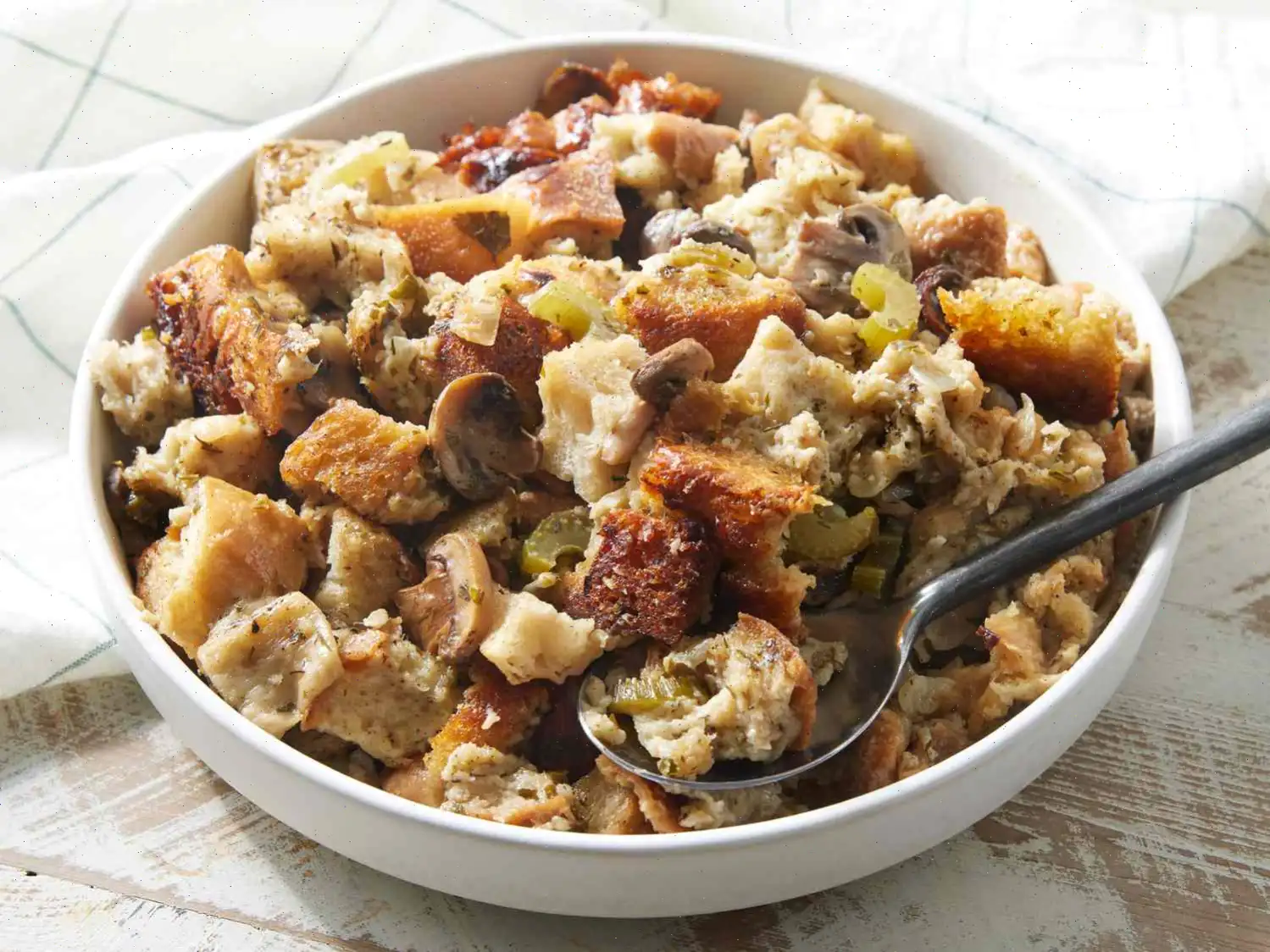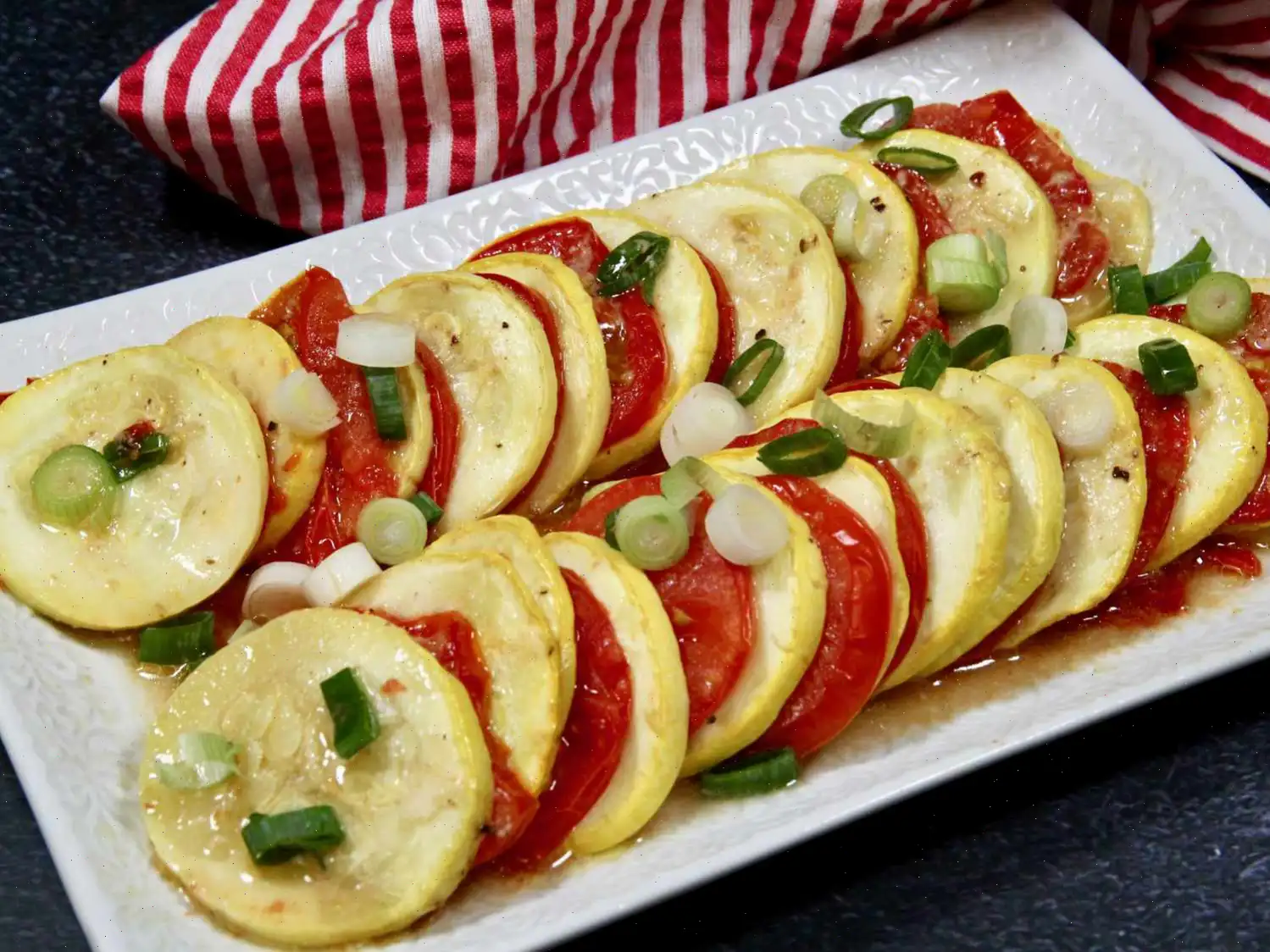
Viking Stew Recipe
Ingredients
This recipe yields 6 hearty servings. Quantities are adjustable, but cooking steps and timing should remain the same.
- 4 1/2 pounds boneless pork shoulder, cut into 2-3 inch chunks
- 3 teaspoons kosher salt, or to taste
- 1/4 cup honey
- 1 cup fresh blackberries (or other fresh berries)
- 2 tablespoons lingonberry jam
- 6 cups cold water
- 3 cloves garlic, peeled
- 1 teaspoon dried thyme
- 1 teaspoon ground coriander
- 1 yellow onion, cut into large dice
- 2 leeks, thoroughly washed and cut into 1-inch pieces
- 10 large brown mushrooms, halved
- 1 small green cabbage, cut into 1-inch pieces
- 3 large carrots, peeled and cut into 2-inch pieces
- 2 fennel bulbs, halved and sliced into 1/4-inch strips
- 1/4 cup torn cilantro leaves
- 1/4 cup chopped fresh dill
- 2 tablespoons fresh thyme leaves
Directions
- Place the pork in a large soup pot or Dutch oven. Add salt, honey, berries, lingonberry jam, and cold water. Turn the heat to high to bring it to a boil.
- As the stew heats, stir in garlic, dried thyme, and ground coriander. Once it reaches a rolling boil, reduce the heat to low and let it simmer gently for 45 minutes, stirring occasionally.
- Add onion, leeks, and mushrooms to the pot. Continue simmering until the meat is nearly fork-tender, approximately 45 more minutes.
- Incorporate cabbage, carrots, and fennel. Simmer until both the vegetables and meat are very tender, about 30 minutes. Adjust salt to taste.
- Serve hot with fresh cilantro, dill, and thyme sprinkled on top.
Chef's Tip: You can use any meat for this stew. For a smoother texture, pure the blackberries and strain out the seeds before adding. Traditional Viking root vegetables such as turnips, beets, or rutabagas can also be included for a historical twist.
Nutrition Facts (per serving)
- Calories: 1134
- Total Fat: 73g (94% DV)
- Saturated Fat: 27g (134% DV)
- Cholesterol: 306mg (102% DV)
- Sodium: 918mg (40% DV)
- Total Carbohydrate: 35g (13% DV)
- Dietary Fiber: 6g (23% DV)
- Total Sugars: 23g
- Protein: 83g (165% DV)
- Vitamin C: 47mg (52% DV)
- Calcium: 195mg (15% DV)
- Iron: 7mg (38% DV)
- Potassium: 1700mg (36% DV)
Percent Daily Values are based on a 2,000 calorie diet. Nutrient content may vary. Consult a doctor or registered dietitian for medically restrictive diets.
The Origins of Viking Stew
Viking stew, as the name suggests, has its roots in the early medieval Scandinavian societies known as the Vikings. These seafaring people thrived between the 8th and 11th centuries, relying on hearty, simple, and nutrient-dense meals to sustain them during long voyages and harsh winters. The original recipes were pragmatic: available meats such as pork, beef, or game were combined with locally foraged herbs, root vegetables, and berries. The combination of sweet and savory flavors, like honey and berries with robust meat, reflects the Vikings resourceful approach to seasoning before the widespread use of imported spices.
Regional Variations
Across Scandinavia, Viking stew manifests differently depending on local ingredients. In Norway, stews often included lamb or fish, while Sweden favored pork and berries like lingonberries or cloudberries. Icelandic versions leaned more on preserved meats and dried herbs, adapting to the islands limited agriculture. Finnish interpretations sometimes add turnips, rutabagas, or mushrooms collected from nearby forests. Despite these variations, the core elementsroot vegetables, fresh or preserved berries, and hearty meatremain consistent, creating a recognizable yet regionally nuanced dish.
Distinctive Features Compared to Similar Dishes
Unlike other European stews, Viking stew is defined by its combination of sweet-tart berries with robust meats, giving it a balance of flavors that is both earthy and subtly fruity. While French or British stews might emphasize rich sauces or wine reductions, Viking stew relies on natural ingredients and minimal seasoning to highlight the quality of each component. Additionally, the use of fennel, dill, and fresh herbs in the finishing stage imparts a bright, aromatic note that sets it apart from other rustic meat-and-vegetable dishes.
Typical Serving Occasions
Traditionally, Viking stew would have been served communally, either at large family meals or during gatherings after a hunt or a day of labor. Today, it is often presented in Nordic-themed restaurants, at medieval fairs, or at home during colder months as a comforting dinner option. It pairs naturally with rustic breads, dense rye, or simple boiled potatoes, staying true to its historical roots while appealing to modern palates.
Interesting Facts
- Despite its name, the Viking stew we know today is a modern interpretation inspired by historical ingredients and cooking methods.
- The use of berries such as blackberries or lingonberries not only adds flavor but also provides a natural source of vitamin C, which was essential in preventing scurvy during long voyages.
- Root vegetables like carrots, turnips, and fennel were staples in Viking kitchens, chosen for their long shelf life and availability through winter months.
- Many modern recipes adapt the stew for different meats, making it versatile while keeping its traditional flavor profile.
- Viking stew showcases the Vikings understanding of combining sweet, savory, and earthy flavorsa culinary sophistication often underestimated in popular portrayals of the era.
FAQ about Viking Stew Recipe
Comments
Gary Mitchell
05/23/2023 05:25:31 AM
This recipe is excellent! The only change I made was using beef and beef broth instead. Everything else I followed exactly, and it was a huge success. I will definitely be making this again.
Larry Baker
05/09/2024 01:04:07 PM
I absolutely adore Chef John's recipes, and this particular one immediately piqued my interest. And how could it not? I followed the recipe to a tee, and the result was truly delightful. The assortment of vegetables in this dish really stood out to me. I had never cooked with Fennel before, and it added such an interesting flavor profile. The combination of honey and berries created a unique and delicious taste. I will definitely be making this again in the future.








